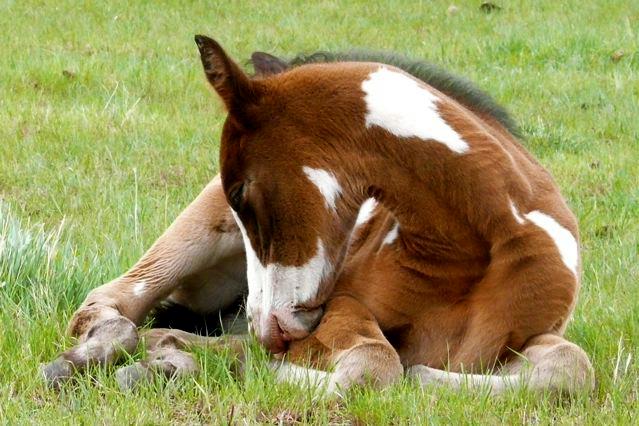Hi! It’s Dakino and I am going to talk about horse’s body language.
Understanding a horse’s body and vocal language is very important. Not understanding it can put you and your horse in danger!
Body Language:
Eyes
Here are a few indicators to help you read the eyes:
- Whites visible (except in appaloosas)- Anxious, angry.
- Half closed – Tired, relaxed, sleeping.
- Wrinkled – Worried.
- Blinking – Processing information, thinking.
- Soft eye – Gentle, relaxed, learning mode.
- Hard eye – Tense, resistant.
Ears
A horse’s ears are key pointers to where the horse’s attention is at.
Pricked ears often mean that it’s listening
- Turned back – Focused on something behind
- Pointing forward – Attentive, curious.
- Rigid pointing – Fear, uncertainty.
- Droopy – Tired, sleepy, bored.
- Pinned back – Threatening, aggressive, angry, warning.
- Pointing in different directions – Focused on two things at once.
- Rotating – Lots going on, curious, nervous, indecisive.
- Airplane ears (drooped out to side) – Depressed, drugged, unwell, sleeping.
- Neutral – Normal.
Muzzle, Lips and Nostrils
- Tight/hard lips – Anxious, tense.
- Wrinkled muzzle – Nervous, worried.
- Licking/Chewing – Stress release, digesting ideas, acknowledgement
- Drooping lip – Relaxed, bored,sleeping
- Swishing/Mobile Muzzle – Curious, extroverted.
- Flared nostrils – Nervous, excited, alert, working.
- Relaxed nostrils, soft muzzle – Neutral, relaxed.
- Flapping lower lip – Unfocused, sensitive, nervous.
- Open mouth, mouthing – Often seen in foals. “I’m a baby- don’t hurt me”.
Head and Neck Set
- Low -Accepting, relaxed.
- High – Fear, anxiety, defiance.
- Level – Neutral, Focused.
Tail
- Swishing – Annoyed, irritated, flies.
- Flagged – Excited, happy, playful, alarmed (often seen in Arabians and foals).
- High/Raised – Attentive, excited, happy.
- Low – Submissive.
- Neutral/level – Focused, normal.
- Clamped down – Fearful.
Legs
- Pawing – Frustrated.
- Standing square – Attentive.
- Hind hoof resting – Relaxed.
- Hind leg lifted – Warning, defensive.
- Stamping- Flies, mild irritation.
- Striking – Angry, threatening, fighting.
- Dancing around – Nervous, excited, frightened.
Vocal Language:
Neigh:
A neigh is a high sound with a “vibrato” to it. A neigh could mean a lot of things. (also called Whinny)
A neigh could vary from a happy greeting to a demanding-”Where is my grain!” Often horses neigh when feeding time comes around.
Nicker:
A nicker is a low sound that sounds like a muffled neigh. How I like to describe it: it is between a neigh and snort.
A nicker is friendly greeting-normally to a being they know.
Snort:
A snort is puffing air through their noses to create vibrating which creates a sound.
Snorts-most of the time-happen when horses don’t like something. But it doesn’t mean they are unhappy. Like for instance, maybe they are snorting because you are taking them out of their stall at a different time.
Squeal:
A squeal is a high-pitched scream like noise. It sounds like a Neigh without happiness.
A squeal is normally accompanied by rolling eyes or seeing the whites of their eyes. When a horse squeals, it means it is frightened by something or really doesn’t like something. A horse may squeal when a horse comes by and nips them on their barrel.
Grunt:
A grunt is a noise that is distinctive
A grunt may mean a horse just finished a hard workout. Or it may mean that they have a discomfort or have an illness. It depends what it is accompanied with.








